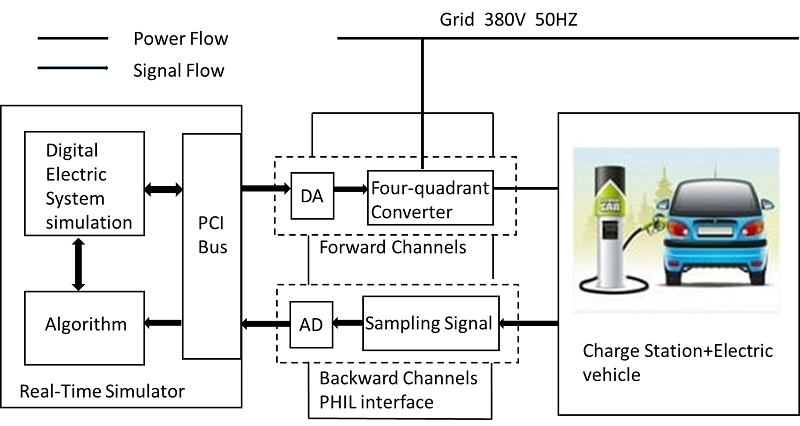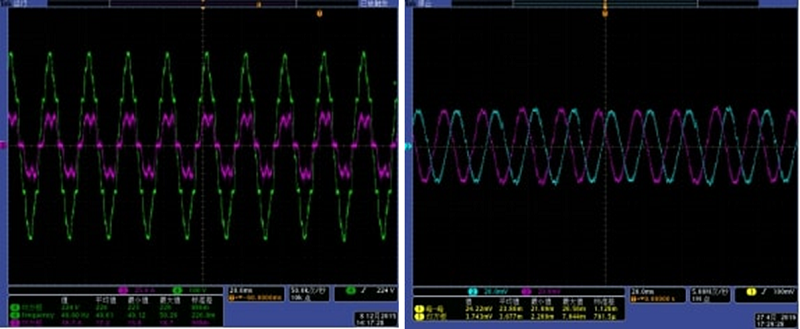Electric vehicle has many advantages such as high torque, zero pollution, low noise and so on, development of electric vehicles can help ease the trouble of environment pollution and energy shortage. Before electric vehicles are promoted to large-scale use and the charging stations are built everywhere, it's really important to do some research about how electric vehicles and charging stations influence the system stability if they are connected to the grid. The engineers of China state grid hope to build a platform to study the interaction between the electric vehicle charging station and the power grid, and also do some research about the vehicle working under V2G (vehicle to grid) mode.
Power Hardware-in-the-loop System
The power amplifier is used to bridge the real-time simulator and the real charging pile together. This power hardware-in-the-loop system is used to study the system behaviors under both the charging and discharging (V2G) modes. The whole system structure is as below:

ModelingTech real-time simulator is used to simulate the power grid. The simulator is connected to power amplifier through physical IO, then connected to the real charging pile and batteries. All these components form a closed-loop system. The connections between the power amplifier, the charging pile and the battery are the high power flow.
Power quality analysis of battery charging experiments
Investigating how electric vehicle charging or discharging affects the power quality of the grid is one goal of this project. The power quality analyzer acquires and analyzes the voltage and current waveforms when adjusting charging power from 0% to 100%. The single-phase unidirectional charging pile adopts the uncontrolled rectifier structure. The left figure below shows the voltage and current waveforms of the unidirectional charging pile. The current is the typical waveform of the uncontrolled rectifier.
Three phase bidirectional charging pile usually adopts the IGBT-based converter bridge. The right figure below shows the waveforms of the bidirectional charging pile.

Summary
Customers use the power amplifier to combine StarSim real-time simulator and the real V2G charging pile together, and build the PHIL simulation system. The experiment and research results are summarized below:
1. Monitor and analyze the power quality of the uncontrolled rectifier charging pile and the fully-controlled bidirectional V2G charging pile.
2. Some suggestions on reducing harmonic currents of two different charging piles are proposed, and the results are verified by the simulation platform.
The PHIL platform, which combines the real-time simulator with the real power devices, improves the process and efficiency of the scientific research. This flexible platform can also be used for other renewable energy and microgrid applications.
Please email info@modeling-tech.com for more information!

WeChat Official Accounts

Tel
Back to top

Tel
Back to top